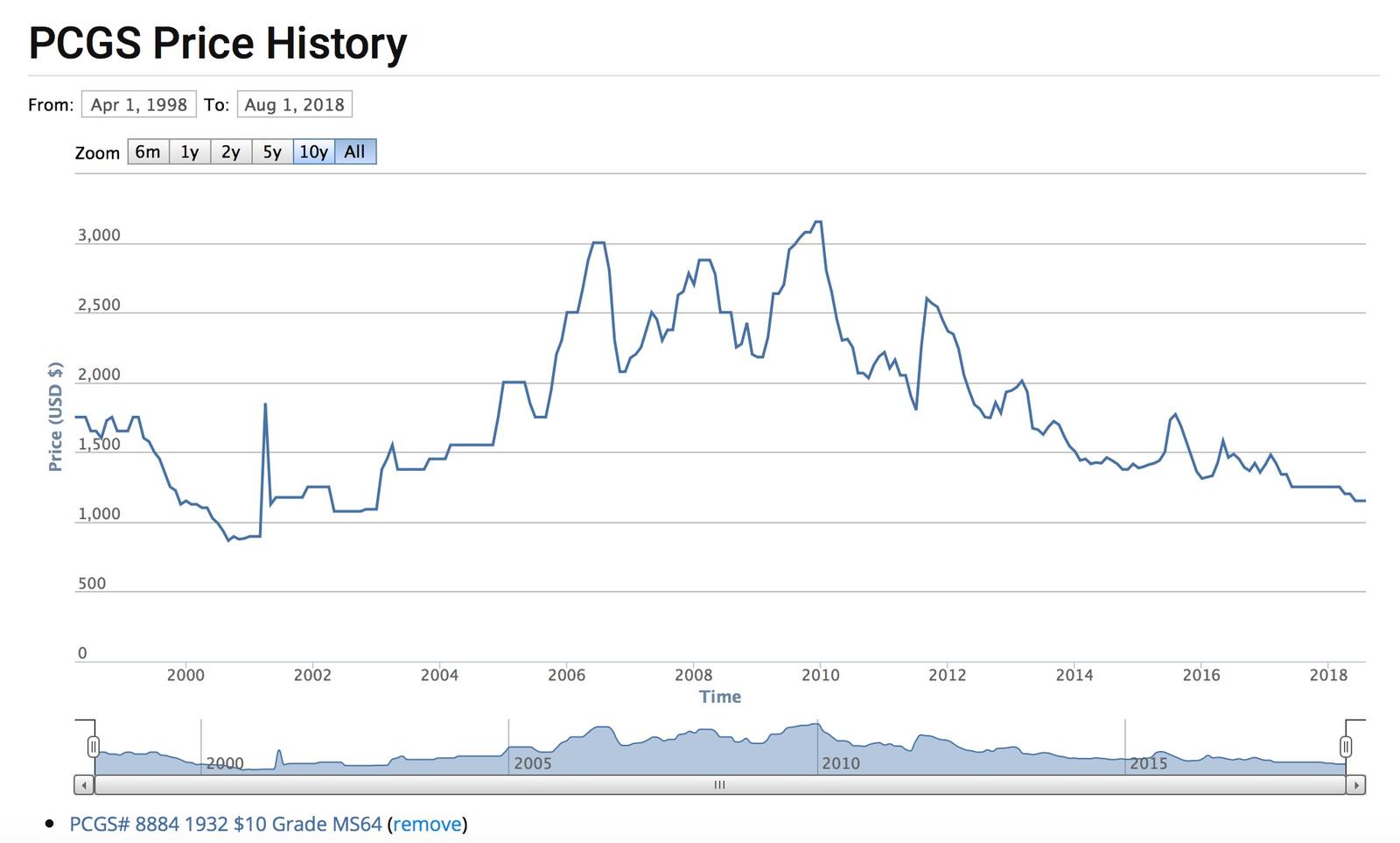United States $10 Indian MS64
Graded by PCGS/NGC
Minted 1907 - 1933
Actual Gold Content: .48375 troy ounce
Just 8 years ago, in the wake of the financial crisis, MS64 $10 Indians topped $3000 per coin, making their current price roughly 1/3 of their peak, and last matched in January 2003, when spot gold was only $350! (See graph below)
For our clients who have positions in graded $20 St. Gaudens and $20 Liberties, this is an unprecedented opportunity to diversify and expand your holdings. Just 40,000 $10 Indians have achieved grade Mint State 64 when combining the populations of both PCGS and NGC. For the sake of comparison, roughly 225,000 Mint State 65 $20 St. Gaudens and 140,000 Mint State 64 Liberties, making these Indians 5X and 3.5X as rare respectively, but yet, with this offer, within a reasonable proximity in terms of price per ounce.

Chart courtesy of PCGS.
Historical Note:
The U.S. $10 Indian Gold Coins were minted from 1907 until 1933 and designed by the famous sculptor, Augustus Saint-Gaudens. The $10 "Indian" was surprisingly controversial in its time, though later became accepted and praised as perhaps the most exquisite coin design in US history. When the coin was introduced in 1907, many Americans were taken aback by the obverse of the coin, featuring Lady Liberty adorned in a full Indian war bonnet, and even further disgruntled by Theodore Roosevelt's decision to exclude the motto "In God We Trust." Eventually, the public came to appreciate the "Indian" design, and in response to public outcry, the motto was added to the coins in 1908. The outer rim of the coin contained 42 stars, one representing each state in the union, until 1912 when the number was increased to 44 to recognize the addition of Arizona and New Mexico to the Union. A perching eagle is pictured on the reverse.
$10 Indians are scarcer and typically more expensive compared to their $10 Liberty design counterparts. When they can be obtained for similar prices, investors should opt for the $10 Indians.